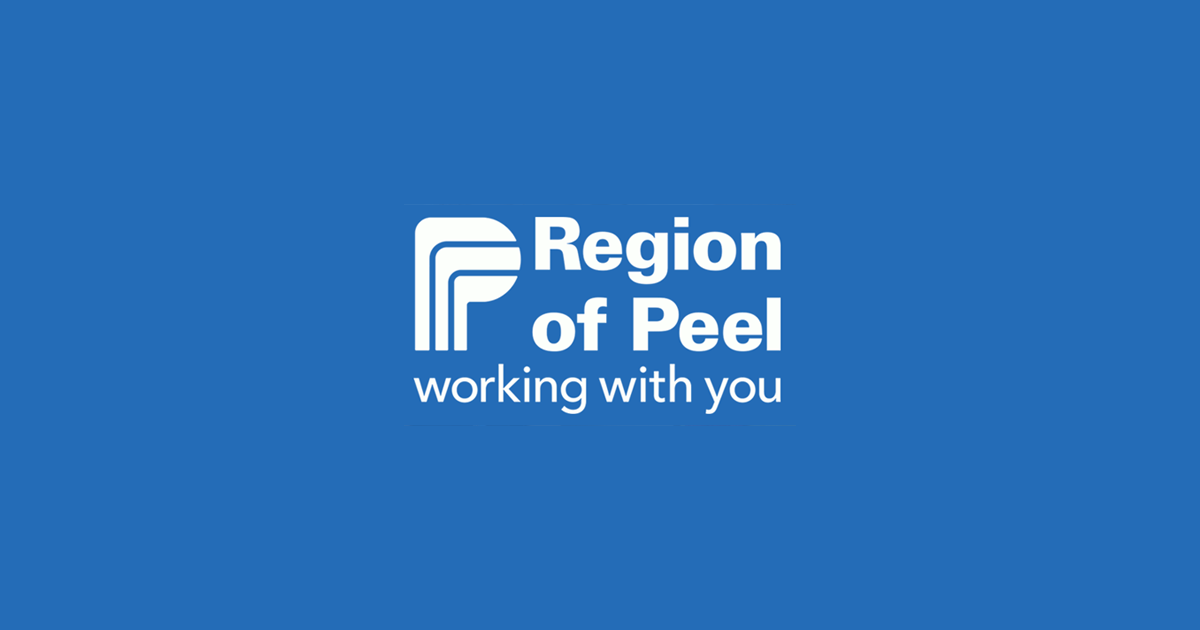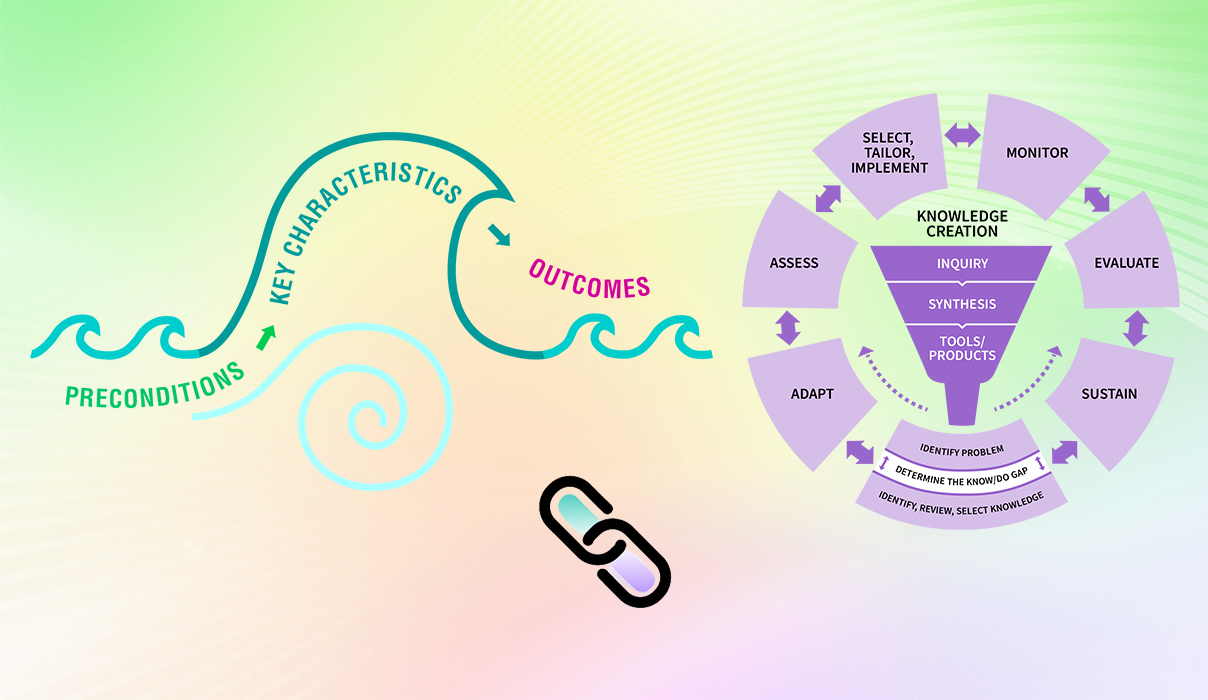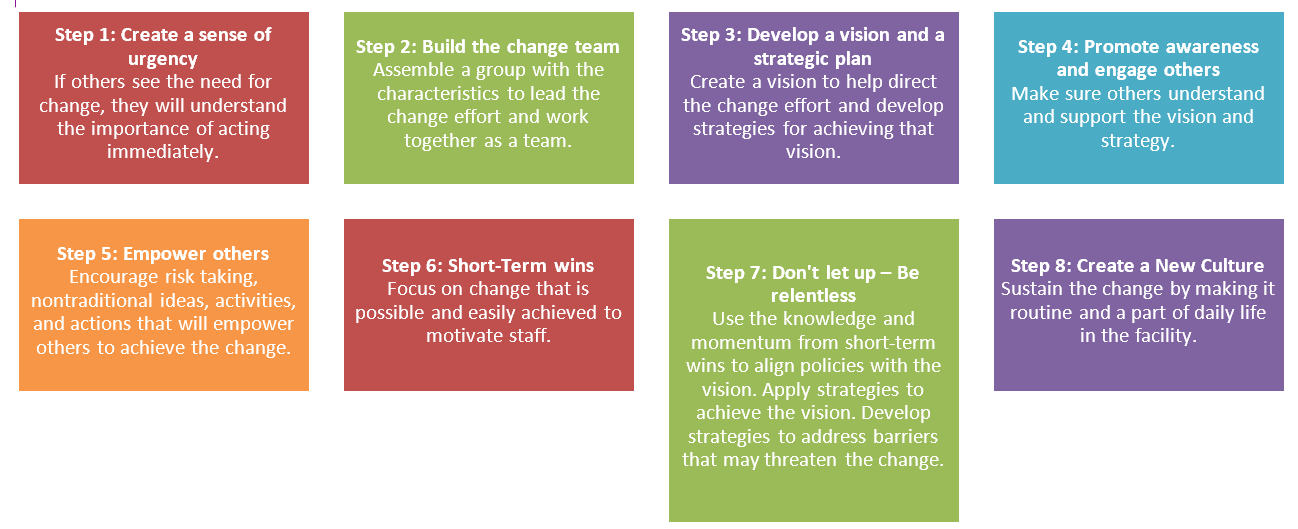Sustain knowledge use
Index
After the outcomes of the practice change have been measured and determined effective, the change team and others can focus on sustaining change to create lasting improvements. This phase reflects the culmination of the work of planning and achieving change and recognizes that sustaining change requires action and attention. Learn more in this section.

Sustaining knowledge use – maintaining the practice change after implementation – should be a key consideration when you are planning for and implementing a practice change (RNAO, 2012). Sustainability in an organization measures the extent to which an implemented practice is maintained within the organization’s ongoing, stable operations (Rabin and Brownson, 2017). It is observed when, after a defined period of time, the program, clinical intervention, and related changes are shown to be sustained.
Sometimes, the individual behaviour, program, or system-level change may evolve or adapt while continuing to produce benefits for individuals, organizations, or systems (Moore et al., 2017). When this occurs, it is also a natural by-product of the knowledge being sustained.
Other related terms
You might come across other terms that are related to or synonymous with sustainability. These include: “routinization”, “institutionalization”, “maintenance”, “durability”, “incorporation” and “integration”.
Why is the phase “Sustain knowledge use” important?
Sustained practice changes are important to ensure the longer-term quality of care for persons. Without sustainability, significant investments of human and financial resources are wasted in the implementation of practice changes (RNAO, 2012; Fleiszer et al., 2015; Stirman et al., 2012).
- Interventions not sustained in the long term could result in worse patient outcomes than standard care. Failure to sustain these changes means that the intended improvements to care are short-lived and that human resources and economic investments in both the intervention and implementation efforts become squandered.
- Interventions that are not sustained can also be detrimental to future efforts in the future – people can lose confidence and enthusiasm if the sustainment of change initiatives is lost over a period of time.
- In a climate of rising demands, shifting priorities and competition for resources, and given that change teams and others want to ensure the long-term impact of their investments, there is a need to understand how the sustainability of implemented initiatives can be influenced.
- Understanding these processes and determining how to foster the continuation of effective practices at a level sufficient to yield desired health outcomes is at least as important as understanding how to implement them in the first place.
SOURCES: Lennox et al., 2018; Stirman et al., 2012.
What does sustainability look like in practice?
Here are three main concepts that represent what sustainability looks like in a health-care setting (Urquhart et al., 2020). Think about how you and your change team can plan for these concepts when you plan for your practice change.
- Continued capacity in human, financial, physical resources to deliver the practice
- Continued delivery of the practice in absence of team who introduced it
- Continued health benefits for the patient/ person, provider, or health setting
Remember: An effective sustainability plan involves planning early and identifying strong program champions to rally around the improvement, choosing a focus that fits with the organizational mission, and continually evaluating process and outcome measures.
Two dimensions of sustainability
Change teams, health professionals, researchers and others typically consider the two dimensions of sustainability:
Sustainability as a dynamic process
- Sustainability is largely considered to be a process – it is a phase of ongoing knowledge use after implementation efforts come to an end (Lennox et al., 2018).
- Sustainability is not an “all-or-nothing” phase or an endgame. It is a process of managing and supporting the intervention that has been implemented, or a new practice that has been introduced into the clinical setting (Urquhart et al., 2020).
- The nature of the sustainability phase is dynamic – planning for and measuring the extent to which an intervention or practice is sustained can result in a series of complex activities that require careful planning (Penno et al., 2019).
Sustainability as an outcome
- Sustainability can also be considered to be an outcome – where health benefits, clinical practices, and intervention activities are maintained (Lennox et al., 2018).
- Sustainability outcomes are “the subsequent impact (health-care improvement or public health outcomes) of sustained intervention use” (Proctor et al., 2015).
- The sustainability of a new intervention or practice directly leads to measurable outcomes at the individual, organizational or systems level.
- It is not uncommon for change teams to use these different levels of outcomes as both direct and indirect measures of whether sustainment is achieved for a change (Lennox et al.,2018).
Case study

Sustaining the Assessment and Management of Pain Best Practice Guideline across a multi-site long-term care home
The Region of Peel, an RNAO Best Practice Spotlight Organization® (BPSO®) started implementing the RNAO Assessment and Management of Pain best practice guideline (BPG) in 2014 and has sustained its use since then. For example, in their 2019 BPSO annual report, they cited a continuous downward trend in the number of clients who reported a worsening of their pain. Pain experienced by the residents was better controlled, and the staff was found to assess, identify, and manage pain better by using the BPG.
Their keys to success include:
- building on what works (for example, existing practices and policies)
- empowering champions and growing their champion network
- involving residents and families
- gaining support from leaders and partners including RNAO, Peel of Region Leadership, Health Quality Ontario).
- collaborating with an interdisciplinary team
- conducting a formal sustainability evaluation
To learn more about The Region of Peel’s journey in sustaining the use of the Assessing and Managing Pain BPG, along with other BPGs, check out this webinar.
Considerations for getting started
Accelerate your success: One way to help sustain the practice or intervention in your setting, is to support the intrinsic motivation of staff to continue with the new way of practice by rooting it in shared values and beliefs. By using sources of intrinsic motivation, staff are more likely to be engaged as change agents because they personally value the reason for implementing the new practice. The experiences of being a part of a change are seen as meaningful, with a sense of responsibility and pride in the results achieved. Check out the Social Movement Action Framework’s ‘Intrinsic motivation’ to learn more about how intrinsic motivation plays a role in change.
Here are a few steps to help you and your change team get started with planning for sustainability, which we have adapted from materials by the U.S.-based Agency of Healthcare Research and Quality.
Plan early and think long-term
Identify and develop program champions
Build an implementation team that will be helpful in sustaining change
Empower staff
Establish a sustainability measurement plan
Identify and address barriers to sustainability
Engage others with stories of success for the practice change or implementation
Recognize and celebrate success!
Implementing and sustaining practice changes can go hand in hand
Download "Sustaining change".
KTA Tools

Applying pragmatic and valid tools can help change teams accurately measure the factors that impact sustainability, helping strengthen their understanding of these factors.
For each tool, we provide two documents:
- a summary page that includes the tool’s purpose, description and applicable action cycle phases
- a companion document that details the tools’ pragmatic and psychometric properties.
Additional resources to support the use of the KTA tools:
View two summary tables that describe all of the tools included in the Leading Change Toolkit, what they measure and in which of the KTA action cycle phase(s) they can be applied.
Read more about considerations for using KTA tools by change teams including the how-tos of selecting a tool, implementing it, and determining the next steps for follow-up.
Valid KTA Tools
Practice tips
- Plan early. Sustained practice changes are more likely to occur if plans for sustaining them are built into your implementation strategy.
- When you assess your context for implementing the practice change, think about how to sustain the change.
- Remember that you must continue to collect and analyze data beyond the monitoring and evaluation phases to assess the continuation of initiative activities and outcomes and to determine whether you have achieved sustainability.
Five keys to sustaining a practice change
Five characteristics to help maximize the chances of sustaining a practice change in your setting:
- A program can be modified over time – it has flexibility.
- Champions are present.
- A program “fits” with its organization’s mission and procedures.
- Benefits to staff members and/or clients are readily perceived.
- Staff and others in external organizations can provide support.
SOURCE: Lennox et al., 2018.
Factors to consider when planning for sustainability
Top three factors that help sustainability:
- alignment of the innovation with your organization’s priorities and values
- access to enough funding to support the new practice or continued intervention on an ongoing basis
- formal and informal leaders who will continue to support the practice or intervention.
Top three factors that hinder sustainability:
- limited funding
- lack of resources
- absence of leadership
The four domains of factors that influence sustainability
Researchers broadly classify factors that influence sustainability in four domains (Hailemariam et al., 2019):
- innovation: the new process, change, product, practice, program, innovation, or intervention;
- context: inner setting: context, practice setting or organization; outer setting: external conditions, context, system, or environment;
- processes: including methods, systems, structures, or strategies; and
- capacity: ability of an organization to sustain the implementation gains, characterized by workforce characteristics.
The table below outlines several other factors that help or hinder sustainability, sorted by the domain (Hailemariam et al., 2019).
|
|
Innovation |
Context (inner or outer setting) |
Processes |
Capacity |
|
Helping factors |
|
|
|
|
|
Hindering factors |
|
|
|
|
Remember: At times, discontinuing a particular intervention may result from the development or discovery of more effective, efficient or compatible practices adaptations. Or, a partial continuation of an intervention or integration of new practices may occur in response to new evidence, changes in priorities or resource availability, or other contextual influence. (Stirman et al., 2012).
Strategies for sustainability
Here are seven strategies commonly used by change teams who aim to sustain the innovations they’ve implemented:
- Acquire sufficient funding for work for the continued use of the evidence-informed intervention or practice.
- Maintain skills through continued training, booster training sessions, supervision and feedback.
- Make sure that organizational leaders and relevant individuals prioritize and support continued use.
- Make sure that organizational priorities and program needs remain aligned with the innovation.
- Maintain staff engagement.
- Adapt the innovation to increase continued fit and compatibility with the organization.
- Monitor and evaluate the effectiveness of the innovation.
SOURCE: Hailemariam et al., 2019.
Share your experience
Your experiences and observations on how a change initiative is sustained will help move the field forward!
- The concept and understanding of sustainability in the implementation science literature are relatively new.
- Even though researchers, change teams and health professionals have made huge advancements since 2015 in conceptualizing sustainability, there are still many gaps that will need to be addressed in the literature.
Check your progress
- You have established a sustainability team.
- You have incorporated strategies that will help sustain the practice change introduced into the setting.
- You have included factors that will help with the sustainability of the practice change in your sustainability plan.
- You have reviewed any factors that may impede the sustainability of the practice change.
- You have established a plan to measure the sustainability of the practice change.
Linking this phase to other framework components

Linking this phase to elements of the social movement action framework
You and your change team’s capacity in the “Sustain the change” phase may be enhanced or accelerated by the addition of some of the elements of the SMA Framework, as the two frameworks are complementary. In addition to the linking example described earlier in this section, there can be many other points of connection between the two frameworks. Below are three examples for you to consider:
- Core leadership structures are essential: In the SMA Framework, “core leadership structures” represent a group of people responsible for sharing leadership and for guiding the evolution of a social movement. Leadership is not vested in one person but across a group, such as a change team. You and your team can support sustainability by maintaining leadership roles that drive and support the practice change.
- Change is scaled up, scaled out, or scaled deep: When change has been achieved, you and your change team can focus on scaling the change. Scaling up means expanding the breadth of the change to other units or across an entire setting and engaging others. Scaling out the change alters standards or policies to extend its lifespan. Scaling deep involves a shift of values to embrace the change initiative and create new norms of evidence-informed culture – activities may include advancing public policy initiatives to create change at a systems level.
- Capacity in leading change is increased: When you and your change team and others develop the knowledge, skills, and confidence in social movement thinking and actions, you learn strategically how to co-design change and position it as credible and valued. You realize the powerful impact of mobilized individual and collective action and collective identity as drivers for sustaining the change. By developing this capacity, you, your change team and others can sustain the change initiative.
For more discussion about the dynamic links between the elements of the SMA Framework to the KTA Framework, see the section "Two complementary frameworks".



